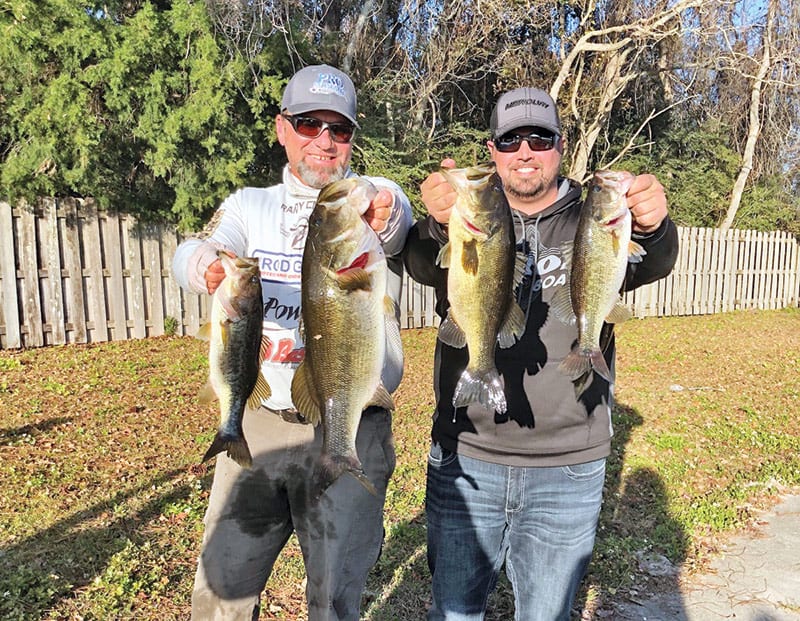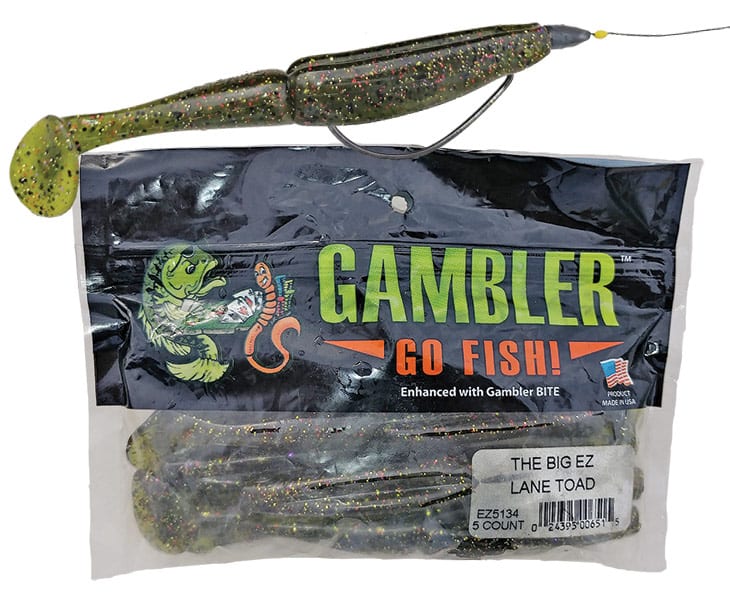
It appears that the lake may be down through February and should start coming back up in March. In any case, bass will surely be looking to spawn, if we get some mild temps as we move close to the coming full moon. For now, I’d concentrate my efforts with pre-spawn tactics.
Prior to spawning, bass actively search out food. Their metabolisms are starting to speed up and they’re producing eggs and roe; this brings on quite an appetite!
This doesn’t mean they will eat anything, but I do believe this increases your odds of success when using techniques that include search baits that cover a lot of water such as crankbaits, spinnerbaits, jerkbaits and swimbaits.
Lipless crank baits are perhaps the most effective search tool you can use this time of year, especially when casting them around grass flats and edges. Water clarity and grass thickness determine the type of line I use. Clear water and sparse grass call for 12- to 15-lb. test fluorocarbon line, while stained water and thick grass are best picked apart using 50 lb. test braid.
Jerkbaits, both floating and suspending, are also great now; both can be fished on fluorocarbon line. In fact, I suggest casting your floating jerks on fluoro now to better enable you to both twitch it slowly over shallow grass, and get it down a bit deeper. I usually cast suspending jerks on light fluoro (10- to 12-lb. test) for maximum action and depth. If the water temps are still hovering in the 50’s, suspending jerks will work best; over 60 degrees, a floating jerk in the shallows is hard to beat.
If you’ve discovered bass are shallow, then be sure to cast a swimbait to them. I primarily use a Gambler Big EZ in Lane Toad color, Texas-rigged with a small lead weight pegged above a large 7/0 work hook on 50 lb. test braid (pictured). Long casts to targets you’ve not gotten close to will yield the best results from big bass that have no idea you’re in their neighborhood. This requires the use of a fairly long rod like a 7’2” to 7’6” med heavy action. The trick is to simply cast and retrieve slow and steady. When you feel the strike, it will often be just a “tick.” Let the fish eat this bait a few seconds before you swing, then swing hard! It can be difficult to get a big thick hook to penetrate through a thick bait like the Big EZ and into the hard jaw-bone, so it requires some force.
Good fishing and God bless.
CAPT. RANDY “C-NOTE” CNOTA
C-note Charters
Panama City, FL
cnotecharters.com
(229) 834-7880

